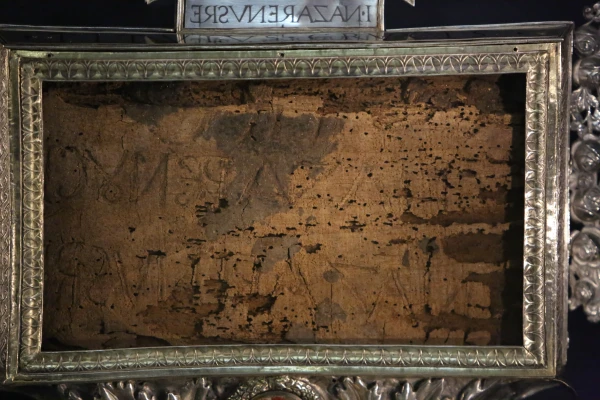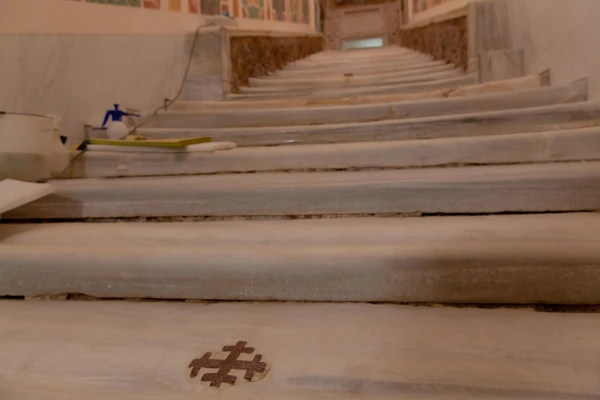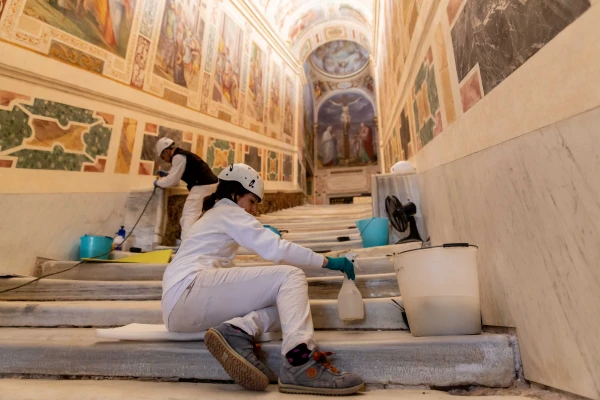Rome Newsroom, Aug 18, 2022 / 04:00 am
On Aug. 18, the Catholic Church celebrates the feast of St. Helena.
The mother of Constantine the Great, St. Helena is believed to have restored many sites in the Holy Land, where she discovered the cross on which Christ died and other relics from his Passion, some of which she brought back with her to Rome.
These relics can still be venerated today, in Rome’s Basilica of the Holy Cross in Jerusalem.
The basilica was originally a chapel designed by St. Helena to hold the relics of the True Cross found on Calvary. The chapel had been part of an imperial palace Constantine gave to his mother when he moved the capital of the Roman Empire to Constantinople.
The church has undergone many changes over time. One of the relics on display in the basilica’s relic chapel was rediscovered inside a wall during a restoration in the 15th century after it had likely been hidden there during an earlier renovation in the 1100s.

The Titulus Crucis, Title of the Cross in Latin, was the wooden tablet hung on Christ’s cross explaining the reason for his Crucifixion. In Greek, Latin, and Hebrew it says: “Jesus the Nazarene King of the Jews.”
It is believed the Titulus Crucis was brought to the basilica in the sixth century. Other relics now on display were similarly not part of the relics tradition says St. Helena brought to Rome in the 4th century.
After her pilgrimage to the Holy Land, St. Helena brought fragments of the True Cross, the cross on which Jesus died.

She also brought one of the nails used in Christ's Crucifixion.
According to tradition, the Holy Stairs were also brought to Rome by St. Helena in the 4th century.
The Holy Stairs, also called the Scala Sancta, are held to be those which led to the praetorium of Pontius Pilate in Jerusalem, and which Christ would have ascended on his way to the trial before his Crucifixion.
The stairs are near the Archbasilica of St. John Lateran, and were first opened to the public more than 400 years ago by Sixtus V.

(Story continues below)
So many pilgrims visited the stairs in the first century after they were opened to the public, the marble became worn down, creating deep furrows in the steps.
In 1724, Servant of God Benedict XIII covered the Holy Stairs in wood for their protection. They were uncovered for the first time in 2018, during a year-long restoration project — and in 2019, for a limited time visitors could venerate the marble steps without the wood coverings.




